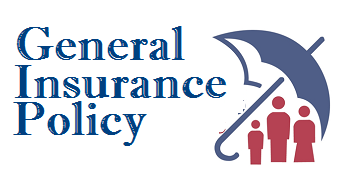Causes, Symptoms, And Risk Factors Of Contact Dermatitis
3 min read
Contact dermatitis, stemming from exposure to irritants or allergens, requires understanding its causes, symptoms, and risk factors for prevention and management. We explore allergic and irritant forms, including less common types like contact dermatitis. Prompt recognition of signs and identification of risk factors is vital for managing this common skin condition, especially for individuals more susceptible to it. As we explore these facets, it’s important to note the impact on individuals’ overall well-being and consider the role of health insurance in providing financial support for medical care.
Contact dermatitis can be broadly classified into these main types:
- Allergic Contact Dermatitis: Occurs when the skin reacts to foreign substances, triggering allergies. Common allergens include cosmetics, latex, and metals like nickel or gold in jewellery, causing itching, dryness, rash, and blistering.
- Irritant Contact Dermatitis: More prevalent, caused by direct contact with toxic substances like cleaners and bleach. Occupations with frequent handwashing, such as hair stylists or medical personnel, are at higher risk.
- Photo Contact Dermatitis: Uncommon type where certain skin products irritate when exposed to sunlight, categorised as irritant or allergic.
Symptoms Of Contact Dermatitis:
The symptoms vary based on the type of contact dermatitis.
Allergic Contact Dermatitis Symptoms:
- Dry, flaky, and scaly skin
- Itchy rash with oozing blisters
- Darkened skin, burning sensation
- Swelling, especially around eyes, face, or groin
Irritant Contact Dermatitis Symptoms:
- Dry, cracked, and blistered skin
- Sores feeling tight or swollen
- Open wounds with crusts
- Symptoms can worsen with high temperatures, friction, or dry environments.
Treatment For Contact Dermatitis:
Most cases resolve on their own, but discomfort can be alleviated at home:
- Avoid scratching to prevent infection
- Wash the affected area with mild soap and lukewarm water
- Discontinue the use of suspected products
- Apply petroleum jelly or anti-itch remedies like hydrocortisone cream
- Antihistamines can help reduce allergic reactions and itching
- Medical attention is necessary if the rash covers a large area, is near sensitive areas, or doesn’t improve with at-home care. Stronger steroid creams may be prescribed if over-the-counter remedies are ineffective.
Risk Factors And Susceptibility:
Specific individuals are more susceptible, especially those with reduced skin pigmentation, red hair, a history of eczema, and occupations like agriculture, construction, hairstyling, healthcare, and mechanics where frequent contact with irritants is present.
Contact dermatitis, with its diverse causes and symptoms, underscores the importance of maintaining skin health and awareness. While most cases can be managed with at-home care and over-the-counter remedies, severe or persistent conditions may require professional medical attention. Health insurance becomes critical in this context, offering financial assistance for dermatological consultations, medications, and necessary procedures. Claims are subject to terms and conditions set forth under the health insurance policy. *
The information presented is not meant to be a substitute for medical advice. Any suggestions mentioned should be considered for general use only. For expert guidance on any health ailment or medical issue or any treatment/procedure, please consult a certified medical professional.
As individuals consider their health insurance for family, it’s advisable to utilise tools like health insurance premium calculator to assess the affordability and coverage offered by different policies.
Furthermore, the relevance of critical illness insurance should be considered, as it provides additional support in the face of more severe health challenges. In conclusion, a holistic approach to contact dermatitis involves awareness, prevention, timely medical care, and the assurance provided by comprehensive health insurance plans tailored to the unique needs of individuals and their families. Claims are subject to terms and conditions set forth under the health insurance policy. *
*Standard T&C Apply
Disclaimer: The content on this page is generic and shared only for informational and explanatory purposes. It is based on several secondary sources on the internet and is subject to changes. Please consult an expert before making any related decisions.
Insurance is the subject matter of solicitation. For more details on benefits, exclusions, limitations, terms, and conditions, please read the sales brochure/policy wording carefully before concluding a sale.






